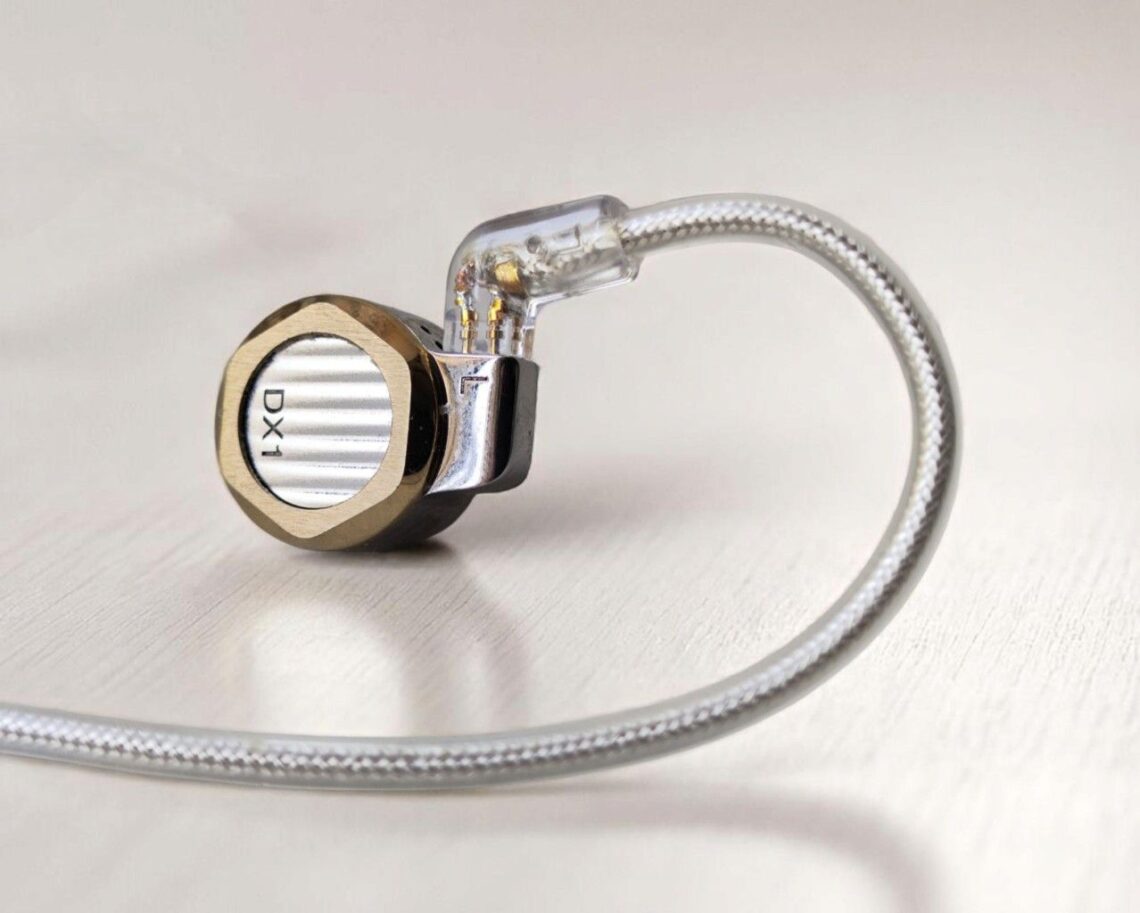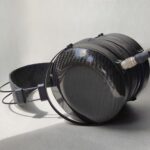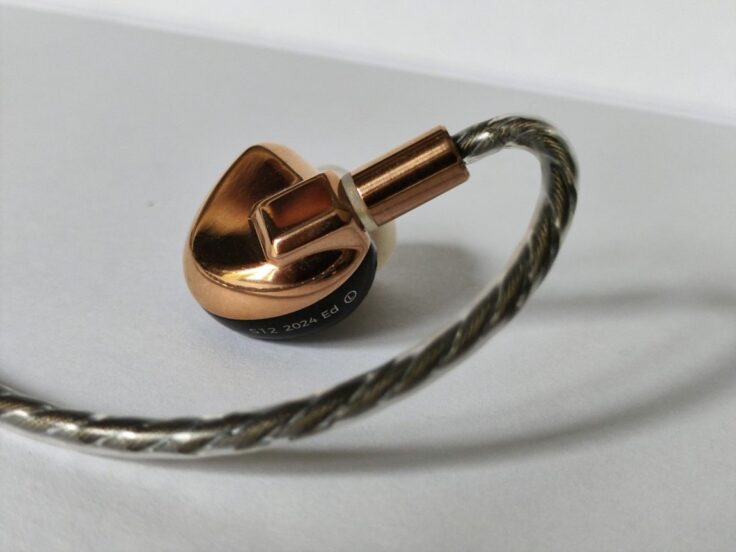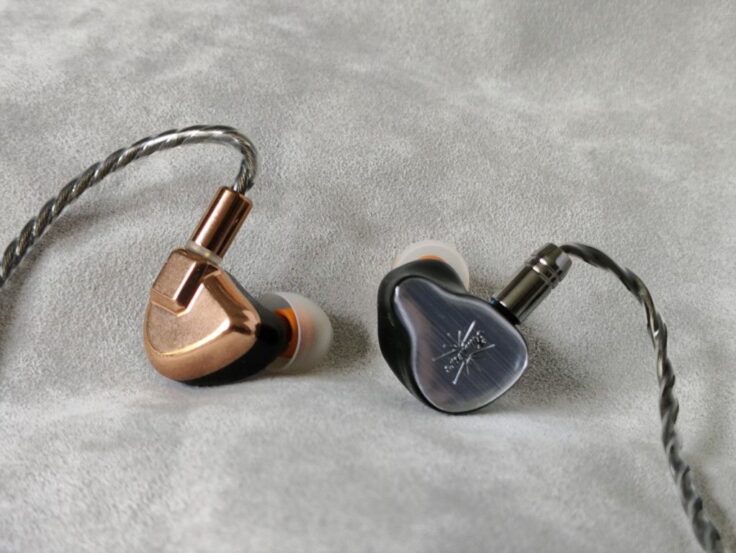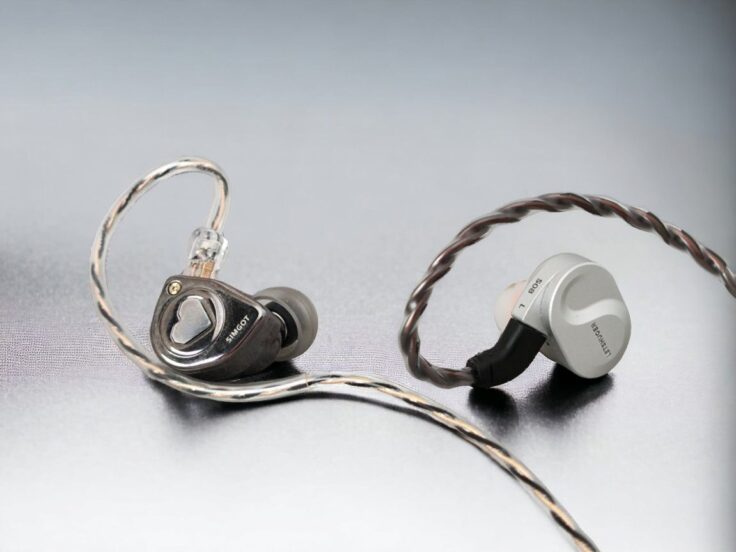The Letshuoer DX1 is the company’s flagship dynamic driver IEM, priced at $159 / €140 (ex. tax). It was developed over two years with a focus on achieving the “most perfect timbre and sound quality” from a dynamic driver. The driver and diaphragm were fully engineered in-house. It features a magnesium-aluminium alloy diaphragm with a diamond-like pattern for enhanced rigidity and coated with special nano-particles. The housing is primarily CNC-machined steel.
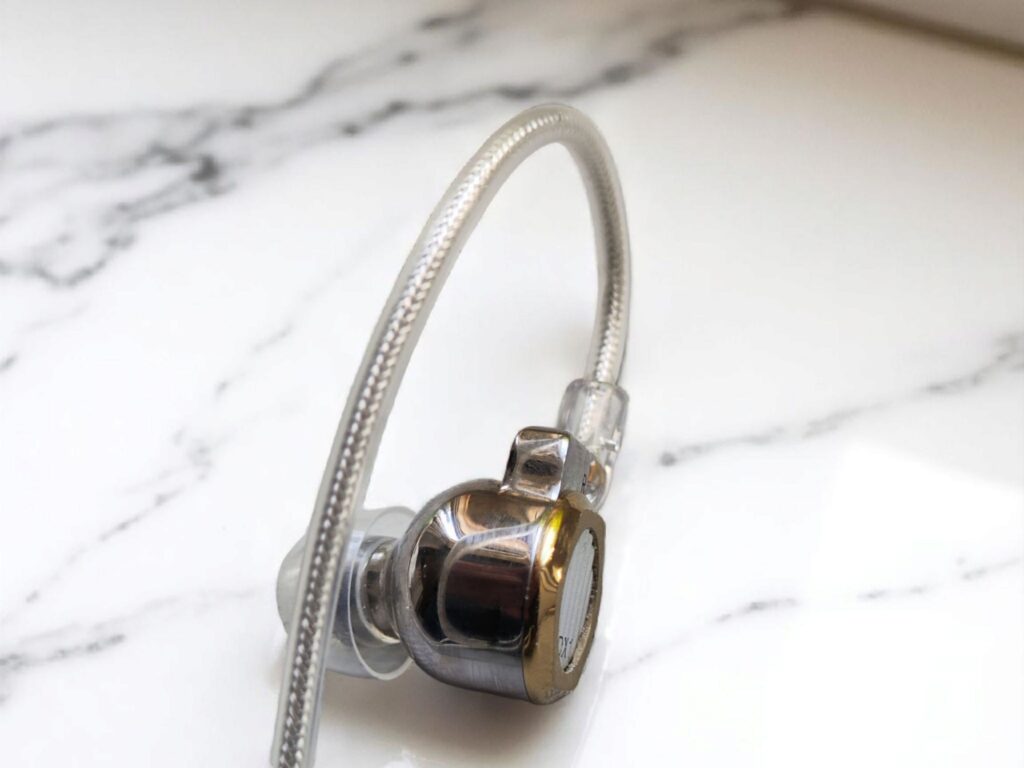
LETSHUOER DX1 SPECIFICATIONS
- Driver type: single 11mm dynamic
- Impedance: 30 Ohms
- Sensitivity: 108 dB/mW
- Diamond-pattern topology diaphragm
- Built-in 5kHz Notch Filter – Purifying sound, reshaping audio
- Stainless-steel shell
- Detachable cable 256-Core silver-plated monocrystalline copper litz cable
- Cable length: 1.2m.
- IEM connectors: 0.78mm dual pin connectors
- Cable termination: 3.5mm or 4.4mm plug options
Current price and availability:
- Linsoul: Letshuoer DX1
- Amazon: Letshuoer DX1
IN THE BOX
- DX1 earphones
- Earphone cable
- Eartips (3 types, 3 sizes each)
- Storage case
- Documentation
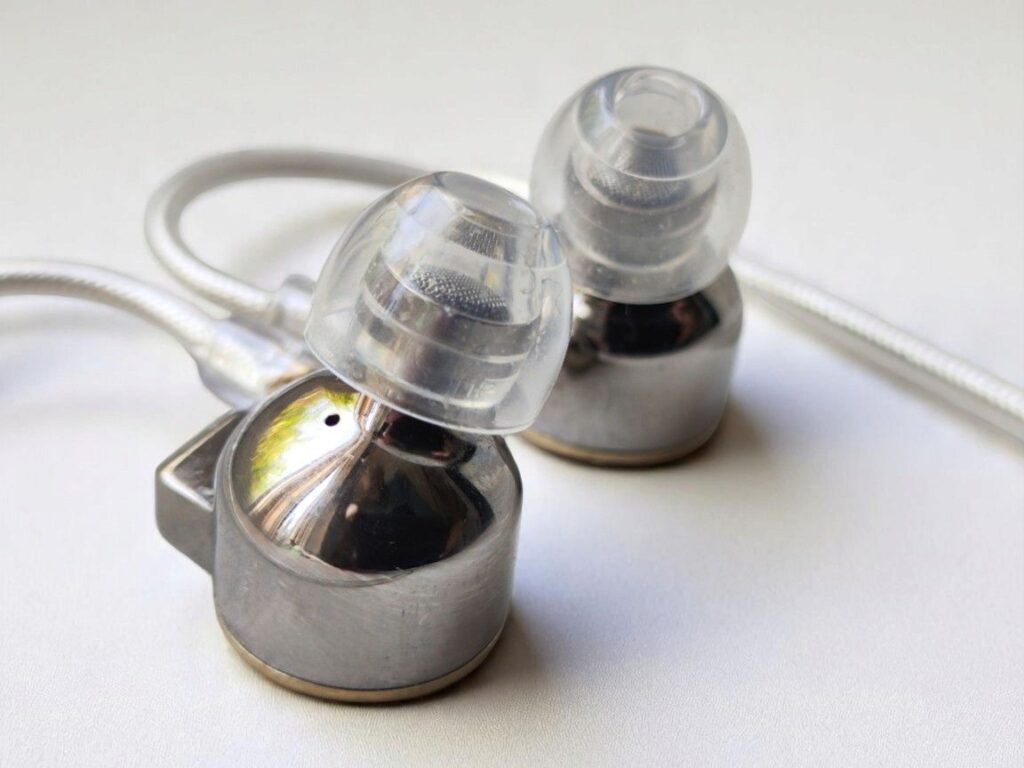
BUILD AND COMFORT
The Letshuoer DX1 features CNC-machined stainless steel housings, electroplated for a shiny finish. Its design draws inspiration from a nut-and-bolt aesthetic, while the interior is ergonomically shaped for comfort. The IEMs are compact due to the single dynamic driver configuration.
The nozzles on the LETSHUOER DX1 are relatively wide, and when combined with the small shells, can make tip fit challenging. After trying many options, Softears UC tips provided the best seal and comfort in my case. Tip fit is highly individual, and finding the right match more often than not requires some personal trial and error.
The included cable is thin and lightweight—comfortable for daily use—but the ear hooks required some work to fit properly. Repetitive bending and adjustment were needed to shape them to the ear. Although using a heat gun was something I considered, simply curling the cable up for a few days was sufficient to achieve a proper shape.
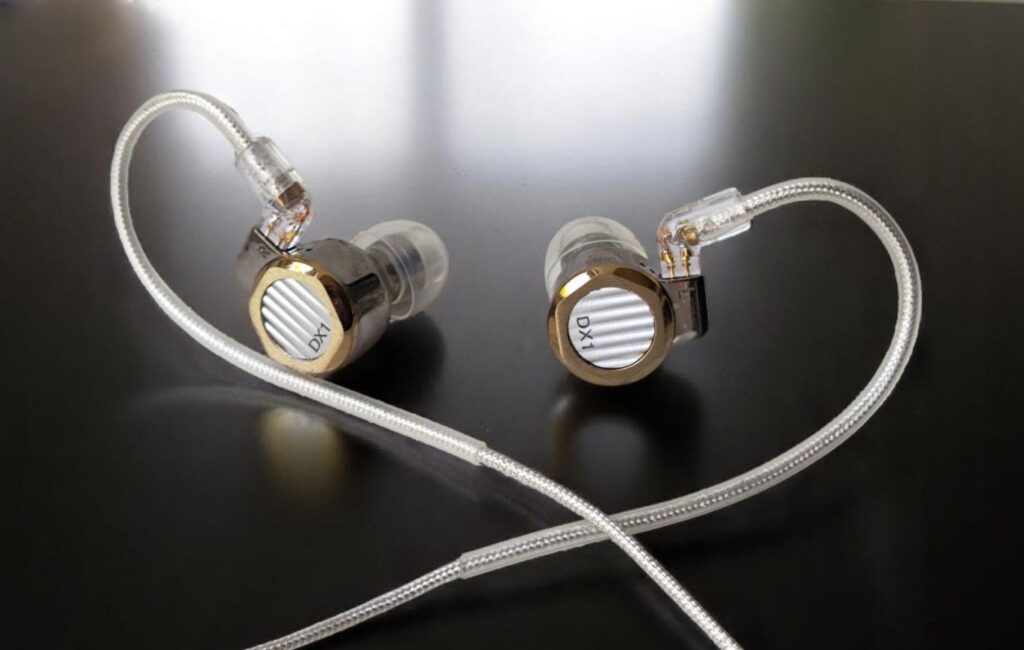
LISTENING IMPRESSIONS
Associated equipment:
- Monolith THX AAA amplifier
- RME ADI-2 DAC FS
Jambi by Tool
The guitars are rich and lush, yet nicely crisp. Vocals sound natural. Sibilance is very mild. The overall presentation is full-bodied and meaty, with a focus on the midrange.
Smile by Pearl Jam
Well rounded presentation with snappy percussion and non-offensive sibilants. Upfront but not too sharp. Vocals sound natural, not overly lush or laid back.
Almost Like The Blues
The DX1 delivers relatively powerful, rounded bass with nice texture. Cohen’s vocals are upfront, rich and lush, with a great sense of texture and reverb.
Black Crow by Cassandra Wilson
A present but not overly rich low end, snappy percussion. Wilson’s vocals are beautiful, rich and nuanced., upfront and energetic. There is a good sense of space and three dimensionality, but I’ve heard better.
Some Day My Prince Will Come by Coryell etc.
The bass is adequately full and rich, but not overwhelming so. The guitar is warmish, yet upfront, crisp and clear.
Bored by Deftones
Textured, Rich guitars, but not too sharp. Vocals stand out in the mix, are textured and have plenty of nuance. Percussion is very snappy.
As Before by Olga Konkova
The cajôn drum is snappy with nice texture, but lacks a bit in the deeper end compared to earphones with more bass lift. The piano is definitely crisp enough in the upper octaves, while more mildly present in the lower midrange. Vocals are lovely, very present, upfront yet delicate.
It Could Be Sweet by Portishead
The bass is punchy but not overly rich. Vocals are clear and bright but sibilants are present but less bothersome than average.
Escape Route by Boris Blank
Textured bass with adequate presence. Generally a very spacious presentation with good instrument separation. Upfront, both Warm and crisp sounding trumpet.
Mahler’s Symphony No 2 III by Paavo Järvi
Very real and live sounding presentation, with everything flowing rather effortlessly, though not overly smooth. Separation is good, with a nice sense of airiness. Dynamics are generally strong. Instruments sound upfront and are not dark or laid-back—horns, for example, have quite aggressive crescendos, and stridency isn’t masked.
Young Vivaldi RV 820 by Modo Antiquo
Again, nice upfront timbre on the string instruments, but the DX1 isn’t hiding stridency where it occurs.
Maple Noise by Greene Serene
Excellent dynamics, with textured bass that isn’t overly dominant. The trumpet and piano both have a nice timbre—occasionally sounding bright and slightly strident, but in a natural, realistic way. Percussion is snappy.
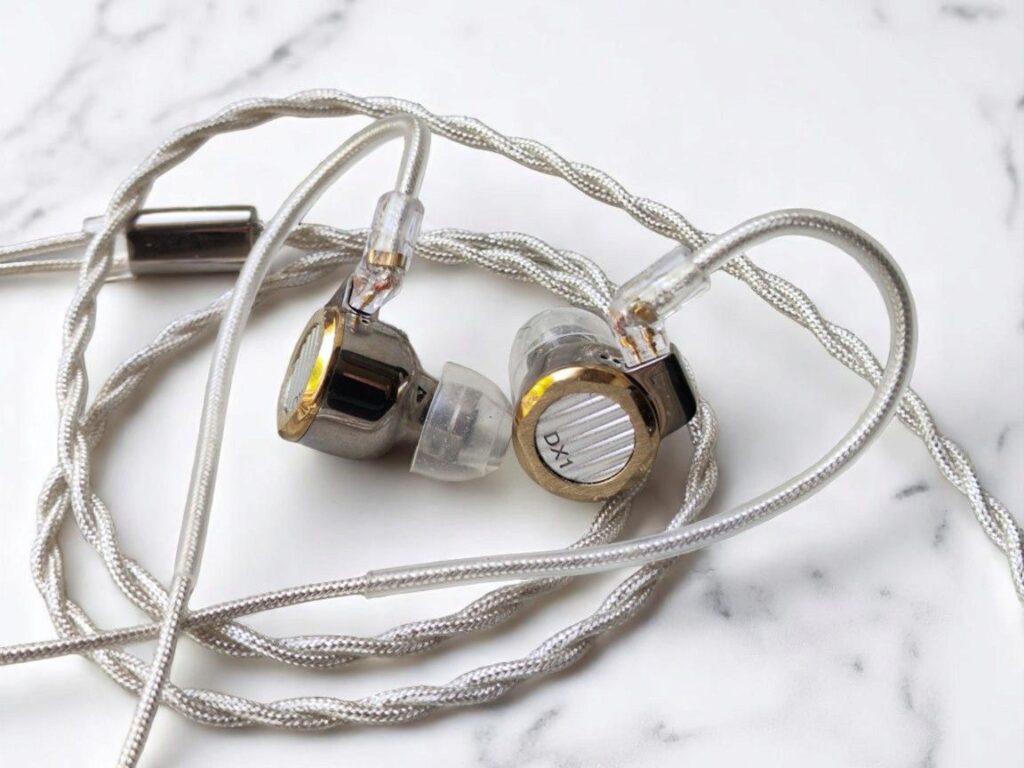
WRAPPING IT UP
Sound Signature
The sound signature is quite neutral. The bass is present enough but not overly so. The mids are upfront—sometimes strident, but not shouty—and the treble is nicely balanced and quite articulate, yet never edgy or piercing, handling sibilants smoothly.
Treble
The DX1 has somewhat crisp and textured treble with great articulation, without sounding harsh.
Midrange
The midrange of the DX1 is crisp and articulate, leaning more toward clarity than lushness or a laid-back character. It is upfront, with a strong presence in the upper mids. While many earphones dial these frequencies back to avoid shoutiness or nasal tones, the DX1 doesn’t, yet still it mostly avoids these issues. However, as it doesn’t mask sharp or forward-sounding instruments or vocals, it can occasionally come across as a bit strident—cymbals, for instance, may sound slightly splashy.
That said, not all music is recorded to sound like soft butter. I generally find the midrange tonality excellent—both neutral and natural-sounding.
Bass
The DX1 isn’t a bass-heavy IEM, but the bass isn’t hidden away either. I find it nicely present but never overwhelming. There are many IEMs with a more elevated bass response, and some with more polite bass. I might miss a bit of presence in the lowest frequencies, but overall it’s just nice and dynamic with great texture.
Soundstage and Imaging
The soundstage is quite open-sounding. The imaging, however, is not particularly impressive—while it’s absolutely adequate, it doesn’t blow me away. That said, imaging seems to be one aspect that improves more noticeably than others with a better source, even though the DX1 is easy to drive in general.
Detail, Dynamics, and Timbre
The detail level is good for the price, but the competition at this price point is fierce, and I don’t think the DX1 outperforms the best. It’s simply good.
The dynamics are strong—while the competition is equally capable, the DX1 delivers good macrodynamics and great microdynamics. In general, the best part of the DX1 is that it feels coherent and natural, without anything sounding overly exaggerated or hyper-realistic.
The timbre and overall cohesiveness of the presentation are what stand out most. I’d describe it as naturally neutral—not too dark and lush, nor too bright and crisp. It’s not a boring, studio-grade neutrality, but rather a well-balanced and uncolored sound.
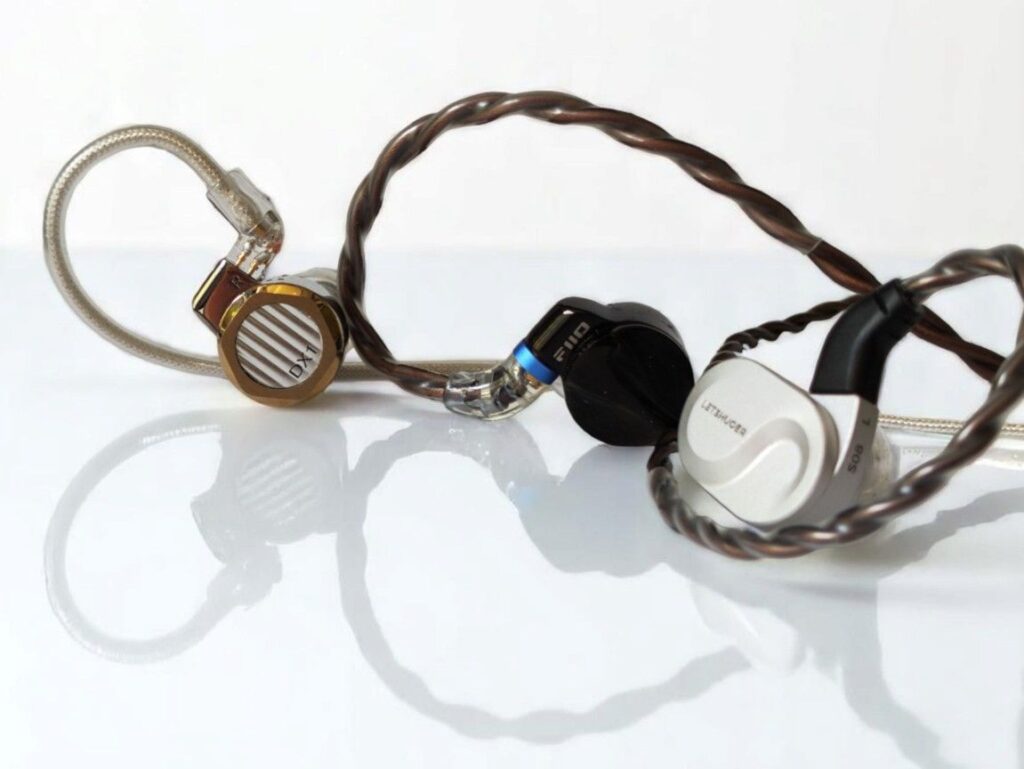
COMPARISONS
Associated equipment:
- Amplifier: Topping A90
- DAC: RME ADI-2 DAC FS
LETSHUOER S08 vs. DX1
The Letshuoer S08 is a planar magnetic single-driver IEM building on the legacy of the legendary S12. It features a 13mm “fourth-generation” planar magnetic driver and is priced at 99 USD / €85 ex. tax. Like the DX1, it has CNC-machined metal housings, but the S08 is significantly lighter due to its aluminum shell. It has a sensitivity of 105 dB and an impedance of 26 ohms.
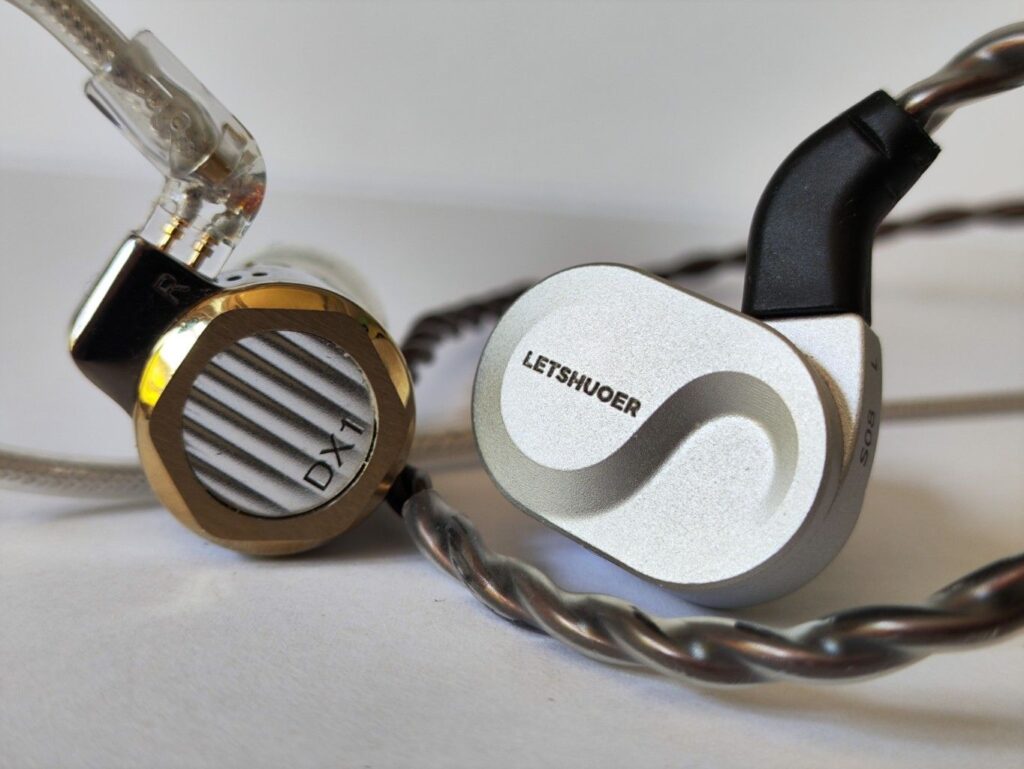
In comparison to the DX1, the S08 offers a darker, smoother, and often slightly more refined sound, with powerful bass, better soundstage depth, and more nuanced detail retrieval. The DX1, on the other hand, delivers a brighter, more energetic, and articulate presentation, with crisper mids and a more natural timbre—especially in the midrange. It also provides greater midrange dynamics, making vocals and most instruments more upfront and lively compared to the more laid-back character of the S08.
Current price and availability:
- Linsoul: Letshuoer S08
- Amazon: Letshuoer S08
FiiO FD15
The FiiO FD15, launched in 2024 as the successor to the acclaimed FD5, features a 13.8 mm metal alloy diaphragm called “magnalium,” a blend of magnesium and aluminum. It has an impedance of 32 ohms and a sensitivity of 112 dB/mW. Like the DX1, it uses a circular stainless steel housing, and like the DX1 it is currently priced around 160 USD / €140 ex. tax.
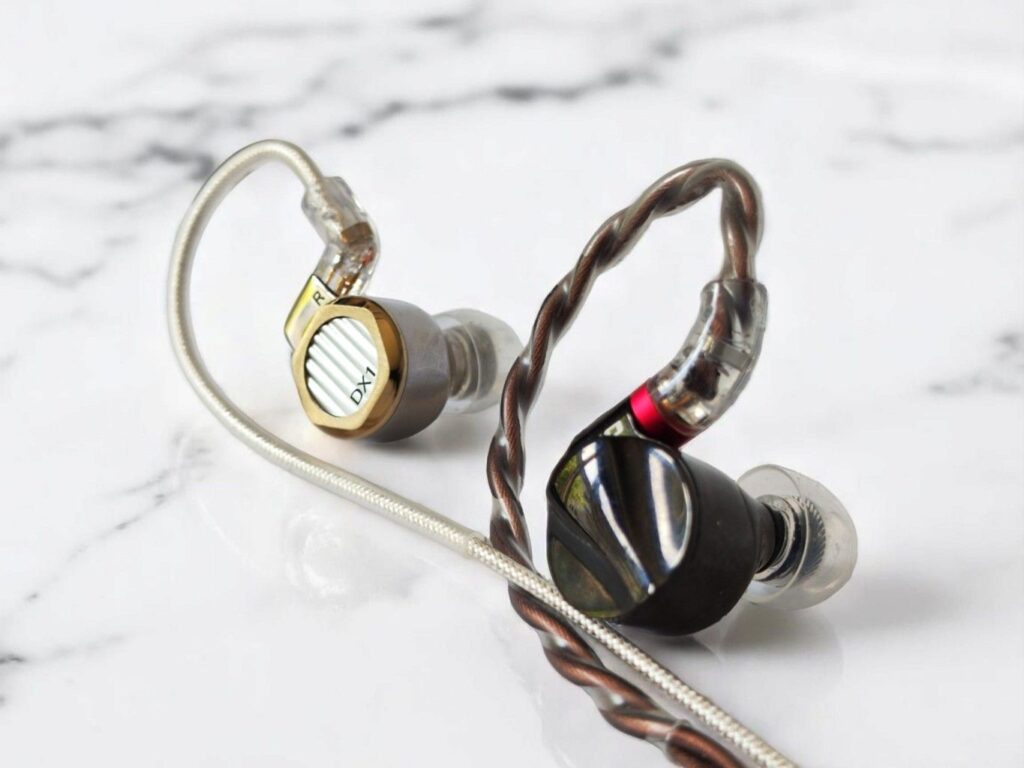
The DX1 and FD15 have much in common but differ in several key ways. The FD15 offers more bass—particularly in the deep end—a darker, lusher midrange, and sweeter, more laid-back treble. The DX1, by contrast, presents a more neutral yet slightly more aggressive tuning, with more upfront vocals, clearer texture, and stronger articulation. The FD15 also provides a deeper soundstage and better imaging, while the DX1 can sound a bit two-dimensional in direct comparison.
Ultimately, it comes down to tuning preference. Personally, I lean toward the lush, smoother character of the FD15, though the DX1 is not far off and comes across as more neutral in overall tonality.
When compared to the Letshuoer S08, the FD15 sits somewhere in between the S08 and DX1 in most aspects.
Current price and availability
- Amazon: FiiO FD15
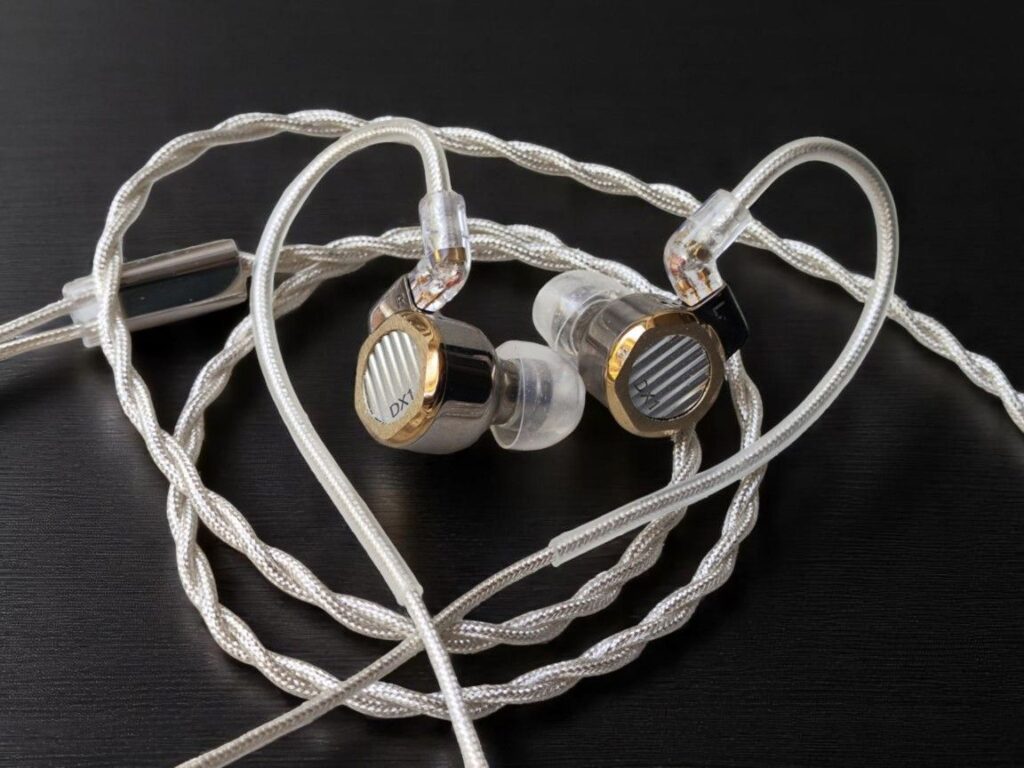
AMPLIFICATION
Amps matter. I usually review IEMs with desktop amps because it’s practical. My go-to is the Topping A90, and while it does a good job and was used for comparisons, I didn’t find it optimal—especially as it slightly compromises the DX1’s soundstage. The Monolith THX AAA performs excellently, but the best portable options are just as capable. Below, I’ll go through some portable options.
Starting with my POCO F5 phone’s headphone output, it already sounds quite good. However, the tiny Jade/FiiO JA11 dongle, sounds better with more detail and instrument separation.
Kiwi Ears’ Allegro Mini sounds a bit smoother but not really better. The Allegro Pro has a bit more detail, though.
The Letshuoer DT03 works very well with the DX1, with a slightly warmer tonality and sweeter mids, yet retaining a high detail level. However, the xDuoo Link2 Bal2 sounds a bit cleaner and it’s still nicely smooth. It has an extra level of refinement and dynamics, and I feel it’s the best so far.
The THX Onyx is more expensive and sounds good, but doesn’t offer anything more than the xDuuo in terms of sound quality, but a slightly lusher tonality.
The Dragonfly Cobalt performs great with the DX1, clean and neutral, refined and subtle. The soundstage is large, there is a good sense of space between instruments. It’s snappy and detailed, neutral and delicate. It reminds me of the xDuuo, but a small step up.
Finally, the Chord Mojo is always great with IEMs. It’s lusher-sounding than the Cobalt, but doesn’t lose any detail, dynamics or articulation. Definitely my favourite.
However, I must stress that the differences between these sources are relatively small, even though there are differences. In conclusion, the DX1 is quite easy to drive but also scales well. The imaging especially gets better with better sources. However, there’s nothing to gain from running them out of expensive desktop rigs.
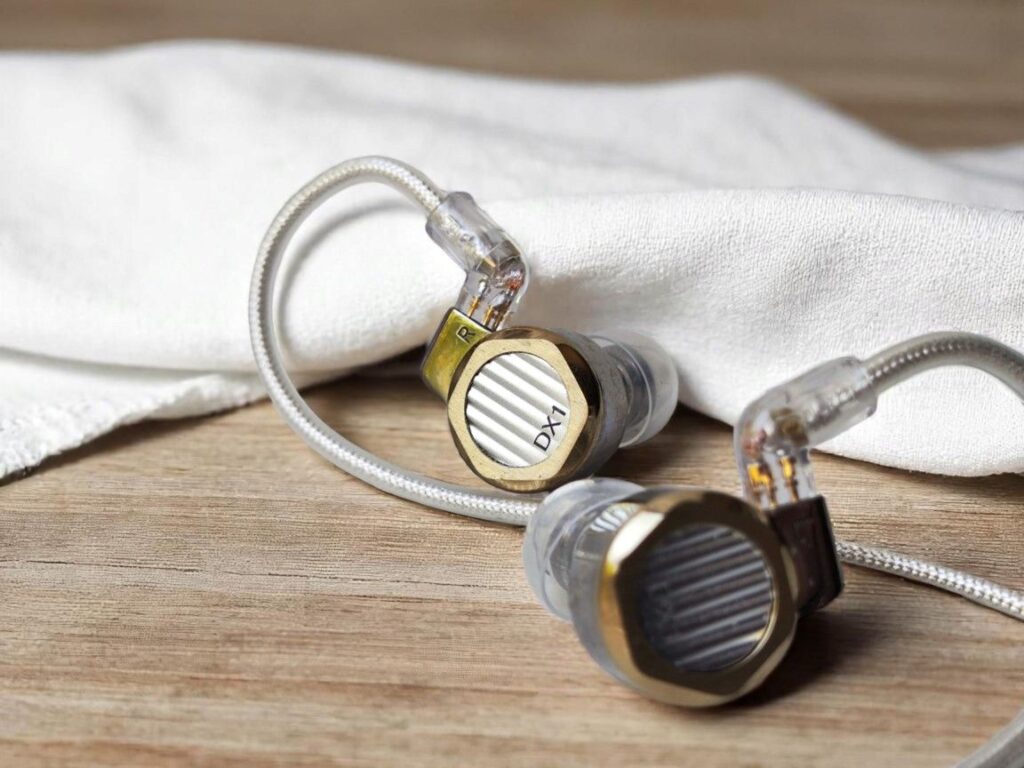
CONCLUSION
The DX1 is a well-crafted and thoughtfully tuned earphone, with cohesiveness being its standout trait. What sets it apart is its honest approach to tonality—it doesn’t smooth over edginess but allows strident instruments to retain their natural bite, resulting in a more realistic and engaging listening experience.
The DX1 might not be the first choice for bass-heads or treble enthusiasts, but if you’re looking for an honest, upfront tuning that lets you focus on the midrange, it could be just what you’re after.
Thanks for reading. You can support us by purchasing anything using any of our affiliate links.
Current price and availability:
- Linsoul: Letshuoer DX1
- Amazon: Letshuoer DX1
Any purchase you make on Amazon or Linsoul with any of our affiliate links will give us a small provision at no cost to you.
We only get a provision for items that are not returned, so there’s no incentive for us to recommend something that’s not good.
Linsoul : Headphones, Earbuds, Wireless Earbuds, Desktop DAC/AMP, Portable DAC/AMP, Digital Audio Players,
Amazon: Headphones, IEMs, Headphone Amplifiers, Home Audio or Anything else.
.
If you enjoyed this article or other content on The Headphoneer, you might consider leaving a small donation to keep this website up and running. No donation is too small. Thanks for supporting us!
If you like our work please follow us on Instagram, Facebook and Twitter , it will help us grow. Sharing is caring 🙂


